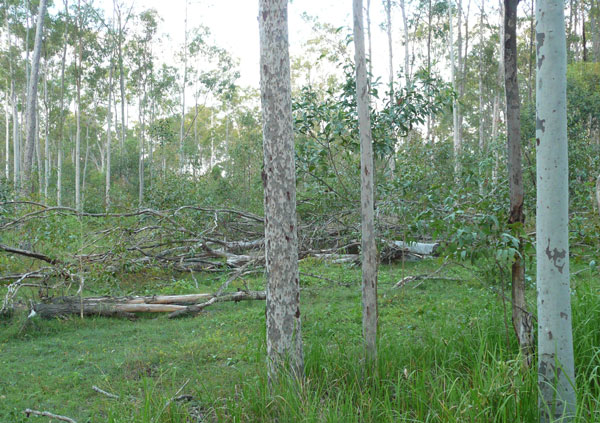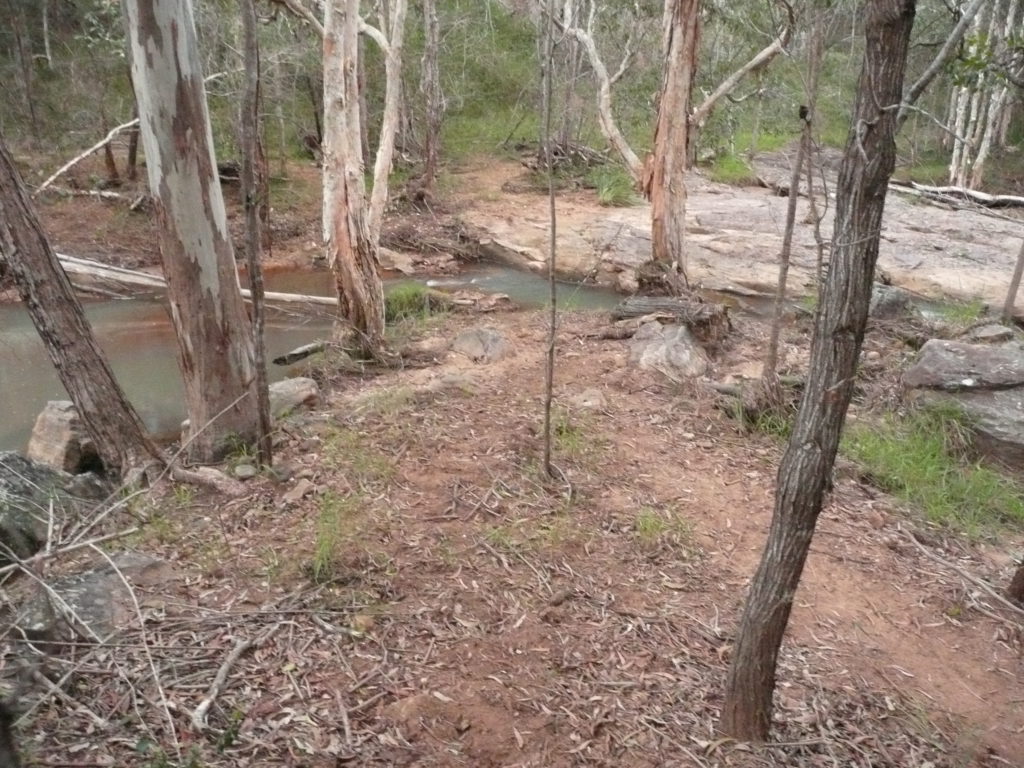Nine years ago we bought a 65 hectare patch of Spotted Gum country in the north-eastern corner of what is now the Lockyer Valley Regional Council area. This was to be a lifestyle venture with space for the extended family. Since joining Land for Wildlife seven years ago, and applying many of the Land for Wildlife principles, ‘Keep it Messy, Mate’ being the favourite, we have seen our patch of country emerge from drought years to become a bush wonderland, teaming with wildlife.
“The country largely looks after itself now that a balance has been returned.”
Family and friends visiting from town often say, “But you have so much work to do”, to which the reply is that the country largely looks after itself now that a balance has been returned.
The most significant decision, in terms of management for wildlife and flora, was to take cattle off the block. The sandy soil of the central ridge is just too fragile. The steep creek banks and a large swampy area are too precious for those hard-hoofed beasts, though we keep half a dozen horses, which don’t plough through the fences into the protected areas the way cattle did. Eastern Grey Kangaroos and Red-neck Wallabies do most of the grass- mowing and we love to watch them at work in the early mornings and afternoons.
A few years ago, we attended a workshop about sustainable native farm forestry, held on a nearby property that had a similar profile of regrowth Spotted Gum and Bloodwood as our block. In an ad hoc way, we had been thinning regrowth, but with no formalised management plan or any proper idea of whether we were doing the right thing by the country in the long term. Subsequent site visits to out patch by SEQ Catchment’s farm forestry advisor and the team from Private Forestry Southern Queensland, saw us register the block as a Farm Forest Practice. We put in place management plans for treating regrowth and became more systematic in identifying self-sown saplings to keep. We also defined no-go areas – rough and messy undisturbed places for wildlife.

Tree tops were left to decompose and provide habitat.

An ephemeral gully running through the property.
Already, the difference is noticeable at ground level. Before, the regrowth canopy was too dense and created an understorey with limited diversity. Now, there are native grasses, herbs, casuarinas, banksias and melaleucas shooting up. There are also large numbers of black wattles and lantana growing happily in the light on the forest floor. It is easy to hand-pull seedlings when the country is wet. No, there is not a lot of work to do, but we can’t be lazy or complacent about the maintenance jobs involved in caring for the country.
The other significant decision was not to replace our dogs as they were taken out by brown snakes. We kept a breed of hunting dogs that were completely wrong for a back-to-nature bush block. We mourned their passing (though the chooks were pretty happy) and planted Melaleuca irbyana on their graves.
We are dogless now, but watching kangaroos and goannas wandering through the house garden, and witnessing at close range the ‘coming out’ of joeys more than compensates. With the demise of the dogs and the increasing density of habitat, Echidnas have also returned to the property. In under two years, they and the growing population of goannas have opened up hundreds of termite nests that sat up like boils on our creek flats that had been cleared in the past for grazing and cropping. The resilience of the country and the ability of the bush to rejuvenate itself continually amazes us as we walk around discovering new plants, birds and frogs.
Article and photos by Jill Watkinson Land for Wildlife member Spring Creek, Lockyer Valley
